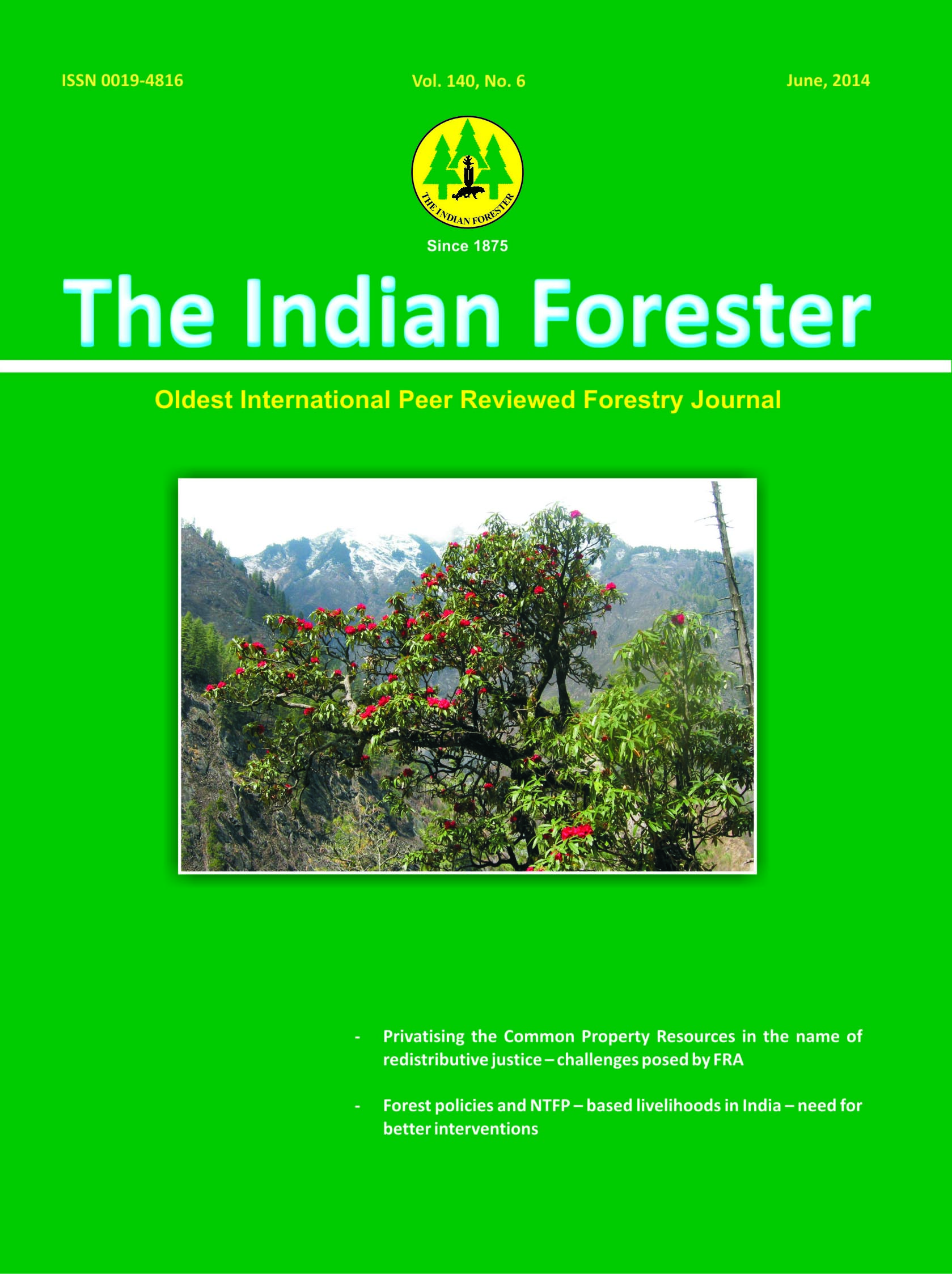Carbon Stock Distribution Pattern in the Solan forest Division (H.P.) - A Case Study
DOI:
https://doi.org/10.36808/if/2014/v140i6/50548Keywords:
Growing Stock, Carbon, Sequestration, Range, Land Use, Soil Depth, Bulk Density, Altitudinal Gradient, Digital Elevation Model (DEM).Abstract
The present investigation was carried out to determine plant and soil carbon in six land-uses viz., chir pine, ban oak, deodar, other broadleaves, culturable and un-culturable distributed along altitudinal gradient from 900 to 2100 m in Solan Forest Division, Himachal Pradesh during 2006-2007. Among land uses, the un-culturable land accounted for 40.08%, chirpine 25.97%, ban oak 17.23 %, other broadleaves 14.78%, culturable land 1.21% and deodar 0.70% of total -1 carbon stock (1.66 M t). However, on per hectare basis maximum total carbon stock (274.35 t ha ) was in other broadleaves land use which was 21.12, 9.29, 1.63, 1.51 and 1.42 times higher than un-culturable, culturable, chirpine, deodar and ban oak land use, respectively. The forest area at elevation between 1200-1500 m accounted for highest per cent carbon i.e., 36.78% however, on per hectare basis, it was found to increase with increase in elevation. Dharampur forest range accounted 30.45%, Parwanoo 26.41%, Solan 22.47%, Kandaghat 11.79% and Subathu 8.84% carbon to the total carbon stock (1.66 M t). In order to exploit the carbon sequestration potential of the region, plantations of forest species should be extended to their corresponding altitudinal limit in the land area available and suitable for planting.Downloads
Download data is not yet available.
Downloads
Published
2014-06-13
How to Cite
Sharma, D. P. (2014). Carbon Stock Distribution Pattern in the Solan forest Division (H.P.) - A Case Study. Indian Forester, 140(6), 592–597. https://doi.org/10.36808/if/2014/v140i6/50548
Issue
Section
Articles
License
Unless otherwise stated, copyright or similar rights in all materials presented on the site, including graphical images, are owned by Indian Forester.





